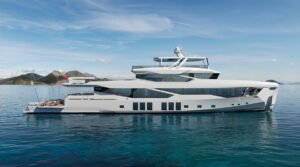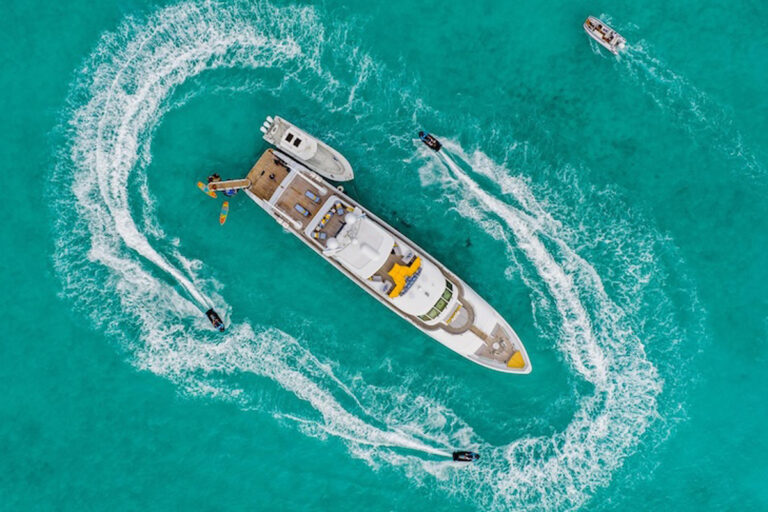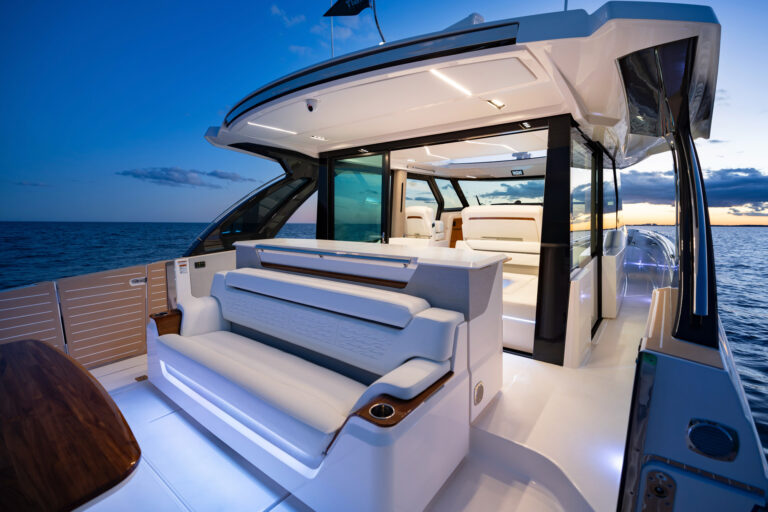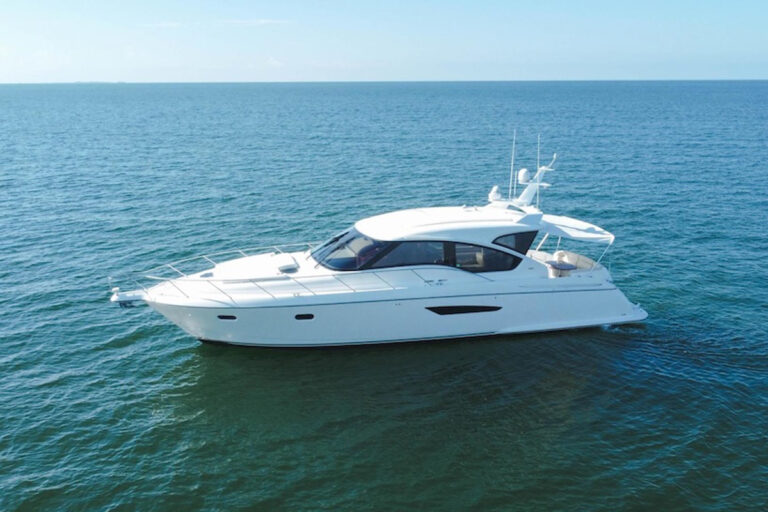In the early 1990s, Luhrs introduced a line of boats that borrowed heavily from the custom tournament world. Attractive styling and competitive pricing earned the company a solid niche in the production fishing boat market, the kind of position most production builders would not fuss with.
But complacency is not the Luhrs way. The company followed up with a 50-foot convertible (“Tournament Fever,” May 1999) penned in part by Bob Sherbert, who established the Daytona nameplate with Jack Hargrave in the 1960s and earned a reputation for high-performance engines and sportfishing boats. The 50’s pedigree and performance were well received, but the yacht left a hole in the Luhrs lineup between 40 and 50 feet.
The introduction of the new 44 Convertible, then, is no surprise, but her design is. It seems Luhrs had commissioned Sherbert to create two designs. The 44 has been waiting in the wings all along.
Similar to the 50, the 44’s profile is distinct when compared with other boats in the Luhrs lineup. Her sheer is a bit bolder, her stem more shapely. She has a reasonable allotment of Carolina flare forward and a pleasing amount of tumblehome aft. Her rakish house is shorter in length than is typical these days, which adds to her foredeck and makes her appear a bit larger than her length overall. Her teardrop window style is similar to that of other Luhrs designs, but her house is more rounded and shapely. Keeping with tradition, her chine rises discreetly forward and meets the stem just above the boot stripe. She has a no-nonsense look, fitted with a factory half-tower, a fiberglass hardtop and Rupp Tournament outriggers, and will attract attention at the dock.
Her cockpit and covering boards are finished in an aggressive molded nonslip that extends forward to the bow. Appropriately sized side decks and a bow rail make moving forward comfortable. An anchor pulpit is fitted, and a windlass is within the rope locker.
Aft, an insulated fishbox is built into the transom coaming adjacent to the transom door. A bulkhead console includes a bait-prep center with a live well to starboard and a refrigerator/freezer to port. While the standard 600-gallon fuel tank consumes the space beneath the cockpit, a hatch with positive locks allows excellent access to the lazarette and steering gear. The cockpit sole is reinforced for a fighting chair.
A stairway (not a ladder) leads from the cockpit to the 44’s bridge. This has become a well-received feature on Luhrs sportfish designs. It makes passage from the cockpit to the bridge pain-free, but makes the walk to the helm longer because the stairs land forward on the bridge.
Conventional helm and companion pedestal seats are offered, but our test boat, hull number one, had bench-style seating sculpted in white Imron-coated aluminum pipe work. I prefer a traditional perch for fishing, but the bench is incredibly comfortable.
The helm has a polished stainless-steel tournament-style wheel and a varnished teak helm pod. Analog instruments are recessed under glass bordered by a polished stainless-steel bezel. There is space for the usual complement of electronics, and Cummins electronic engine monitors are in an overhead electronics panel molded into the hardtop.
Visibility from the helm is excellent, with a clear view of the cockpit. Bench seating is forward, and a hinged seat back allows access to wiring and the electronics sub-panel within the console. Our test boat had a dedicated 12-volt battery bank within the console, and a backup analog control system for her electronically controlled Cummins QSM11s mated to Mathers controls.
The 44’s saloon has a galley and entertainment center aft and seating areas forward. The saloon is a bit small compared with some in the market, but it is comfortable and in keeping with traditional tournament design. The décor is masculine, with a hardwood sole and leather upholstery.
Belowdecks areas are more generous. The master has a queen-size island berth, and the guest stateroom has upper and lower berths. Both staterooms have cedar-lined hanging lockers with lights. The head is cleverly designed for co-habitation with a sink/head compartment and a separate sink/shower compartment. A washer and dryer are hidden behind doors in the passageway.
The 44’s interior detailing and finish are a notch up from the Luhrs standard with which I am familiar. This includes both the level of craftsmanship and the selection of teak used in the joinery.
This model is built at Luhrs’ St. Augustine, Florida, production facility, which I visited during the 44’s construction and for early sea trials aboard hull number one before Luhrs was finished tweaking.
The boat has a moderate trim angle at speed, which is typical of boats designed to plow through nasty inlets. Jamming the throttles forward, I noted virtually smokeless acceleration and the slight, electronically inspired delay required to accomplish this feat. Her bottom design is similar to the 50’s and traditional in form with moderate sections forward and relatively flat after sections. A shallow keel enhances tracking. As she comes on a plane, she feels stouter than her length would suggest. This is in part due to her 16-foot beam, and to her form and balance.
Her hull laminate is a blend of woven roving and multidirectional stitched reinforcements with polyester resin and a vinylester skin coat. Bulkheads and web frames are plywood, bonded to the hull with fiberglass. A fiberglass-over-foam longitudinal stringer system supports the solid fiberglass bottom, and end-grain balsa-coring is used in the hull sides, superstructure and decks. Non-structural joinery is teak veneer over plywood. Like all Luhrs products, the 44 comes with a five-year limited transferable hull warranty.
A hatch in the cockpit allows quick access to a portion of the machinery space with fuel valves, filters, batteries and an X-ChangeR oil change system. A door leads forward into the engine space. Access around and about the engines is good. I was surprised by and impressed with the systems detailing and the compartment’s clean, tidy appearance. The overhead and bulkheads are finished, and the sole is white fiberglass diamond plate. Wiring is tucked neatly in conduit, and gray water is routed through a common drain system.
Air-conditioning compressors are centralized in the engine space beneath a raised section of the sole-not stuffed under berths where they tend to encourage insomnia. I was pleased to find hearty internal sea strainers serving the machinery. A 13.5kW generator with a sound shield is abaft the starboard engine.
The 44’s base price with Cummins power, a half-tower, a hardtop and an enclosure is $599,000. Add about $20,000 for outriggers, electronics, a washer/dryer and a windlass. That’s a competitive price, especially considering the 44, like the 50, is one of Luhrs’ premium products.
_Contact: Luhrs Corporation, (800) 524-2804; __www.luhrs.com__._









